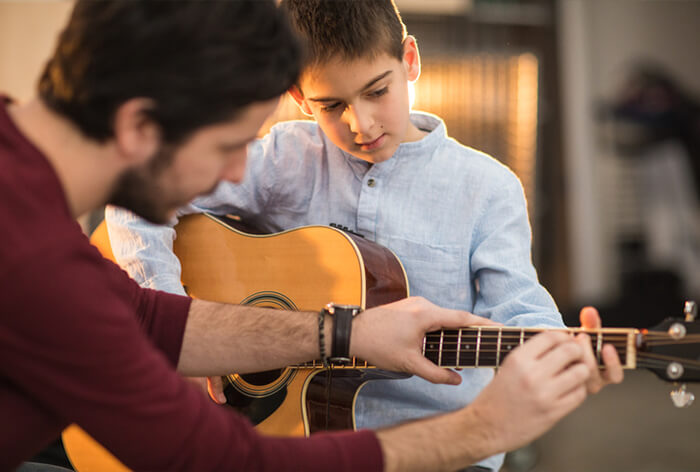By Ian Shepherd
Many teachers focus their lesson time on getting electric guitar students to complete something. We count for them, we demonstrate how things sounds, we show them proper technique, we give them tasks for the following week, etc. In general, though, we don't spend time teaching electric guitar students how to recognize and identify issues or giving them the skills to solve them on their own.
Regardless of my students' age or experience, every lesson I teach is focused around helping them develop their own practice skills. In other words, my main focus as an educator is to teach my students how to successfully practice. A once-per-week, 30- minute lesson means that during the course of a 10,080-minute week your student is on their own for 10,050 of those minutes. You have a tiny fraction of their total weekly time to look over their shoulder, remind them to count out loud, play along with them, etc.
I emphasize good practice strategies at every lesson simply because most of the time I'm not there to help them! Regardless of what your student is working on, weave these simple practice strategies into your daily lesson program:
1: Slow It Down
Most of the time, just slowing down leads to immediate success. Take the time to explain to your student that slowing it down gives your eyes, ears, and hands more time to recognize, process, and remember. It allows you to actually understand what you’re doing right or wrong the moment that it happens. Speed doesn’t matter — steadiness, consistency, and quality does.
2: Break It Up
We hear this all the time, but why do we do it? We are trying to identify the biggest problem and pinpoint the issue — so don’t be afraid to break it down to the most basic elements. Younger students may have a harder time understanding exactly what the problem is. I like to play back to them exactly what I heard them play, but I’ll exaggerate the mistake that they made. The younger and more inexperienced the student is, the more I exaggerate the mistake. Make it funny!
3: Piece It Back Together
Take your time with this! Your students’ individual tendencies, strengths, and weaknesses will determine how it gets put back together. Obviously, the better you know your student, the better you can guide them through this process. Again, don’t be in a hurry and take baby steps!
Electric guitar students should feel accomplished every time they practice. It doesn't have to be a huge success, just simple progress which they can recognize and feel good about. The happier they are, the more excited they will be about electric guitar and taking lessons. It’s a win-win!